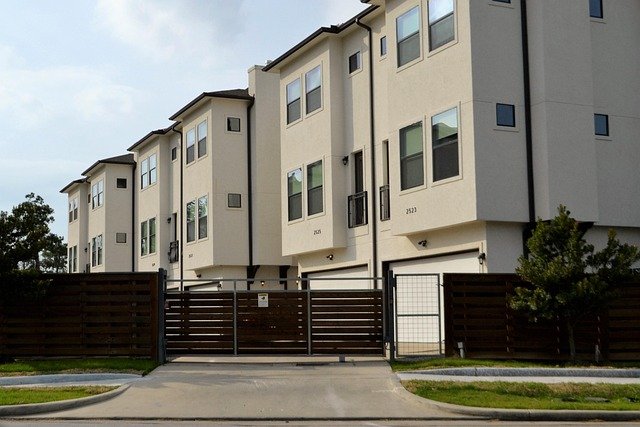Micro-Neighborhoods: The New Frontier in Urban Real Estate
In the ever-evolving landscape of urban real estate, a fascinating trend is reshaping how we perceive and invest in city properties. Micro-neighborhoods, small pockets within larger urban areas, are emerging as the new frontier for savvy investors and homebuyers alike. These hyper-local communities offer unique opportunities and challenges, redefining the concept of urban living and investment strategies.

Understanding Micro-Neighborhoods
Micro-neighborhoods are small, distinct areas within larger urban neighborhoods that have developed their own unique character and identity. These pockets often emerge organically, driven by factors such as local businesses, community initiatives, or historical significance. Unlike traditional neighborhood boundaries, micro-neighborhoods may not appear on official maps but are recognized and valued by residents and local real estate markets.
The concept of micro-neighborhoods isn’t entirely new, but their significance in the real estate market has grown exponentially in recent years. This shift is largely due to changing urban demographics, a desire for more personalized living experiences, and the increasing importance of walkability and local amenities in urban settings.
The Appeal of Hyper-Local Living
One of the key drivers behind the micro-neighborhood trend is the growing desire for a more intimate, community-focused living experience. In an era where technology often dominates social interactions, many urban dwellers are seeking authentic, face-to-face connections with their neighbors and local businesses.
Micro-neighborhoods offer a sense of belonging that can be hard to find in larger, more anonymous urban areas. They often feature unique local businesses, community gardens, and public spaces that foster social interaction. This sense of community not only enhances quality of life but can also lead to increased property values and rental demand.
Impact on Real Estate Investments
For real estate investors, micro-neighborhoods present both opportunities and challenges. On one hand, identifying an up-and-coming micro-neighborhood early can lead to significant returns as the area gains popularity. Properties in these areas often appreciate faster than those in more established neighborhoods, offering potential for substantial capital gains.
However, investing in micro-neighborhoods requires a nuanced understanding of local dynamics. These areas can be more volatile, with rapid changes in popularity and property values. Successful investors in this space need to have their finger on the pulse of local trends, community developments, and the factors that contribute to a micro-neighborhood’s appeal.
Identifying Promising Micro-Neighborhoods
For those looking to capitalize on the micro-neighborhood trend, identifying promising areas is crucial. Key indicators of a burgeoning micro-neighborhood include:
-
An influx of unique, locally-owned businesses
-
Community-led initiatives and events
-
Improvements in public spaces and infrastructure
-
A distinct cultural or artistic scene
-
Growing interest from younger demographics
Investors and homebuyers should look for areas that show signs of organic growth and community engagement, rather than those undergoing large-scale, developer-driven changes.
Challenges and Considerations
While micro-neighborhoods offer exciting opportunities, they also come with unique challenges. One of the primary concerns is the potential for rapid gentrification, which can lead to the displacement of long-time residents and the loss of the very character that made the area attractive.
Additionally, the success of a micro-neighborhood can be fragile. Changes in local businesses, community leadership, or even the closure of a beloved neighborhood establishment can significantly impact the area’s appeal and property values.
The Role of Technology in Micro-Neighborhood Real Estate
Technology is playing an increasingly important role in the micro-neighborhood real estate market. Data analytics and AI are being used to identify emerging micro-neighborhoods before they hit mainstream awareness. Real estate platforms are developing more granular search options, allowing buyers and renters to explore properties at a hyper-local level.
Social media and local online communities are also crucial in shaping and promoting micro-neighborhoods. These platforms often serve as the primary source of information about local events, new businesses, and community initiatives, making them valuable tools for both residents and investors.
Future Outlook for Micro-Neighborhoods
As urban areas continue to evolve, the importance of micro-neighborhoods in the real estate market is likely to grow. This trend aligns with broader shifts towards more sustainable, community-focused urban living. However, the future success of micro-neighborhoods will depend on careful balancing of growth and preservation of local character.
For real estate professionals, understanding and capitalizing on the micro-neighborhood trend will require a combination of data-driven analysis and on-the-ground community engagement. Those who can successfully navigate this new frontier in urban real estate stand to benefit from the unique opportunities these hyper-local communities present.
In conclusion, micro-neighborhoods represent a fascinating evolution in urban real estate. They offer a unique blend of community, culture, and investment potential that is reshaping how we think about city living and property investment. As this trend continues to develop, it will undoubtedly play a significant role in shaping the future of urban real estate markets worldwide.





